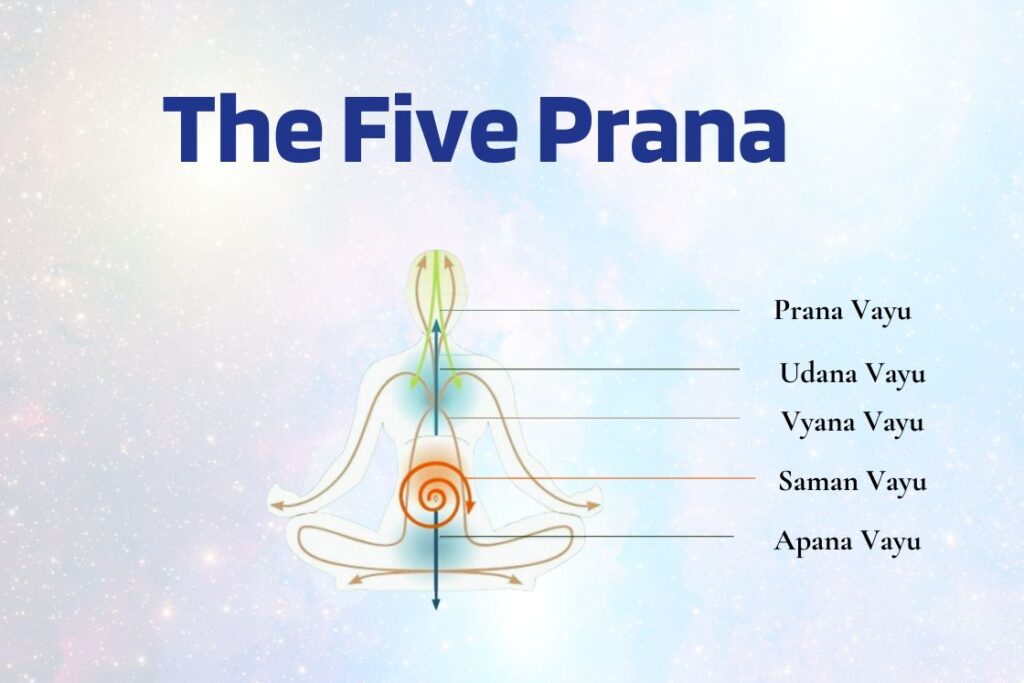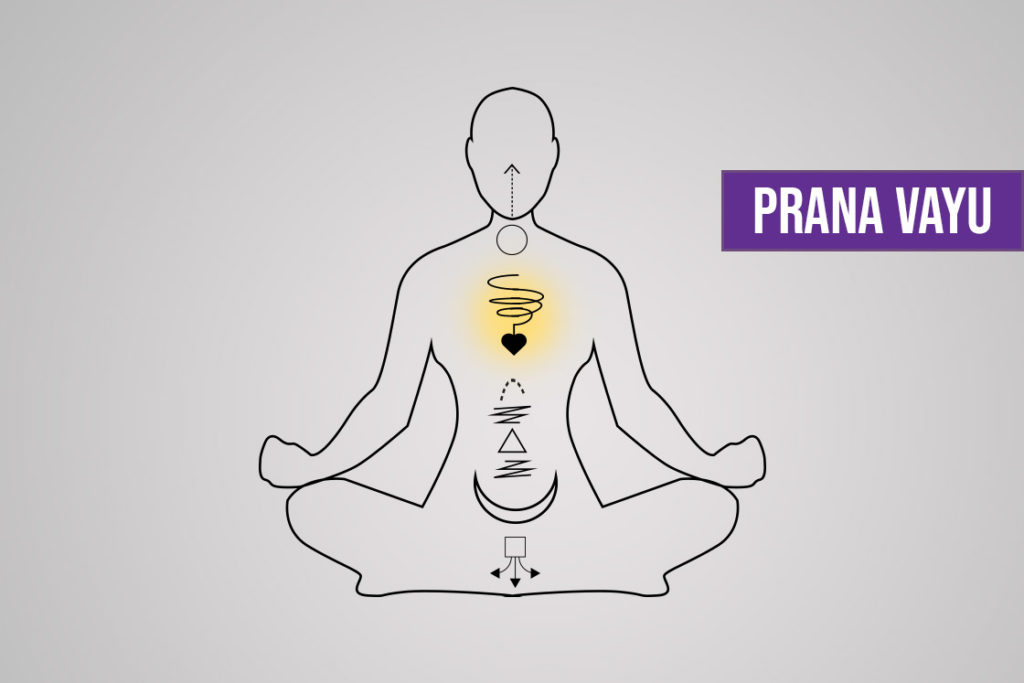
The word “prana” is one of the most commonly used words in the yogic tradition. All your efforts of practicing yoga, pranayama, and meditation are towards increasing the flow of prana energy and keeping it healthy.
Prana (written as “Praan” in Sanskrit) can be interpreted as “life force”, “energy” or “vital principle”. It can also be broken down into the root words pra means “forth” and an means “movement” or “to breath”. Thus, prana is the breathing forth of vital energy.
You may think that prana is similar to breathing. It is partially correct, but prana is more than just breathing. It is energy or shakti that courses through the various energy channel or nadis to provide the vital life force to the body.
One of the sources of prana is breath through which the energy is transported via our blood. And it is not only the breath but food, water, information, perceptions, talking, listening, sensations, etc also contribute towards prana energy for us to sustain.
Prana has 5 energy subtypes – Prana Vayu, Apana Vayu, Samana Vayu, Udana Vayu, and Vyana Vayu. Out of these subtypes, the prana vayu is considered an extremely essential or fundamental vayu.
In this series of 5 Prana vayus, we will explain what exactly is prana vayu and how it is important for our day-to-day functioning.
What is Prana Vayu?

Prana Vayu is one of the five subtypes of prana energy and is considered the most fundamental. It is associated with the inward and upward movement of air, primarily responsible for the intake of energy. This vayu governs the breath, the absorption of food and water, and sensory perceptions. Actions such as coughing, sighing, and swallowing also fall under its domain.
Located in the heart chakra (Anahata) and the chest, where the lungs reside, Prana Vayu facilitates the intake of air, a primary source of prana. Some traditions also associate Prana Vayu with the third eye chakra (Ajna), emphasizing its role in focus and the connection to the element of air.
Functions of Prana Vayu
Prana Vayu plays several crucial roles in the body:
- Breathing: It controls the expansion and contraction of the lungs, thereby affecting the movement of the heart and ensuring efficient respiratory and circulatory functions.
- Swallowing: This vayu facilitates the downward movement of chewed food from the mouth to the stomach.
- Saliva Production: It stimulates saliva production, aiding in the tasting, chewing, and initial digestion of food.
- Digestive Support: It indirectly supports the functions of Samana Vayu (digestion and assimilation) and Apana Vayu (elimination).
- Nerve Functions: By enhancing intellectual capacity, it supports nerve functions, sensory perception, thought production, and information processing.
Signs of Imbalance in Prana Vayu
Looking at the above functions, it seems that the prana vayu is all-pervading. There is not a single body area where the prana vayu doesn’t play an important role. The other subtypes also depend on the correct functioning of the prana vayu.
Hence it goes without saying that even the slightest imbalance in the prana vayu can lead to disturbances. If you have the below-mentioned signs, your prana vayu may be in a toss.
- Breathlessness, asthma, bronchitis, hiccoughs
- Cold, congestion, cough
- Hoarse voice
- Low immunity and energy
- Poor circulation,
- Heart palpitations
- Sleep apnea
- Poor posture
- Excessive anxiety, worry, fear, anger
- headaches
- Loss of focus
- Emotional blockages due to imbalances in the heart chakra
How to Balance the Prana Vayu

Maintaining a balanced Prana Vayu involves several practices:
- Yoga: Dynamic poses that promote fluid movement and open the upper body, such as Child’s Pose, Cat/Cow Pose, Bridge Pose, Bow Pose, Camel Pose, Dancer Pose, Cobra Pose, Chair Pose, Warrior Poses, and Downward Dog Pose.
- Pranayama: Controlled breathing techniques like Ujjayi Breath (Victorious Breath), Bhastrika (Bellows Breath), and Nadi Shodhana (Alternate Nostril Breathing) help enhance and balance Prana Vayu.
- Meditation: Regular meditation brings awareness to the prana flow and mental state. Practicing Prana Mudra (joining the tips of the ring and little fingers to the thumb) can stimulate energy channels, clear chakra blockages, and balance elemental energies.
- Lifestyle: A balanced diet, walks in nature, and surrounding oneself with positive stimuli like colors, aromas, and sounds can support healthy Prana Vayu.
Prana Vayu is essential for our day-to-day functioning, influencing everything from our respiratory and circulatory systems to our mental clarity and emotional well-being. By understanding and nurturing this vital energy, we can promote overall health and vitality.
Conclusion
The body’s sustaining system is known as prana. Take a minute to explore what your body requires once you’ve reached a state of understanding of how your breath flows throughout your body. A great place to begin is to become aware of your prana vayus and their various roles.




 Oct 24th to 30th
Oct 24th to 30th Learn Mudras
Learn Mudras  Deepen Your Practice
Deepen Your Practice  Find Inner Peace
Find Inner Peace